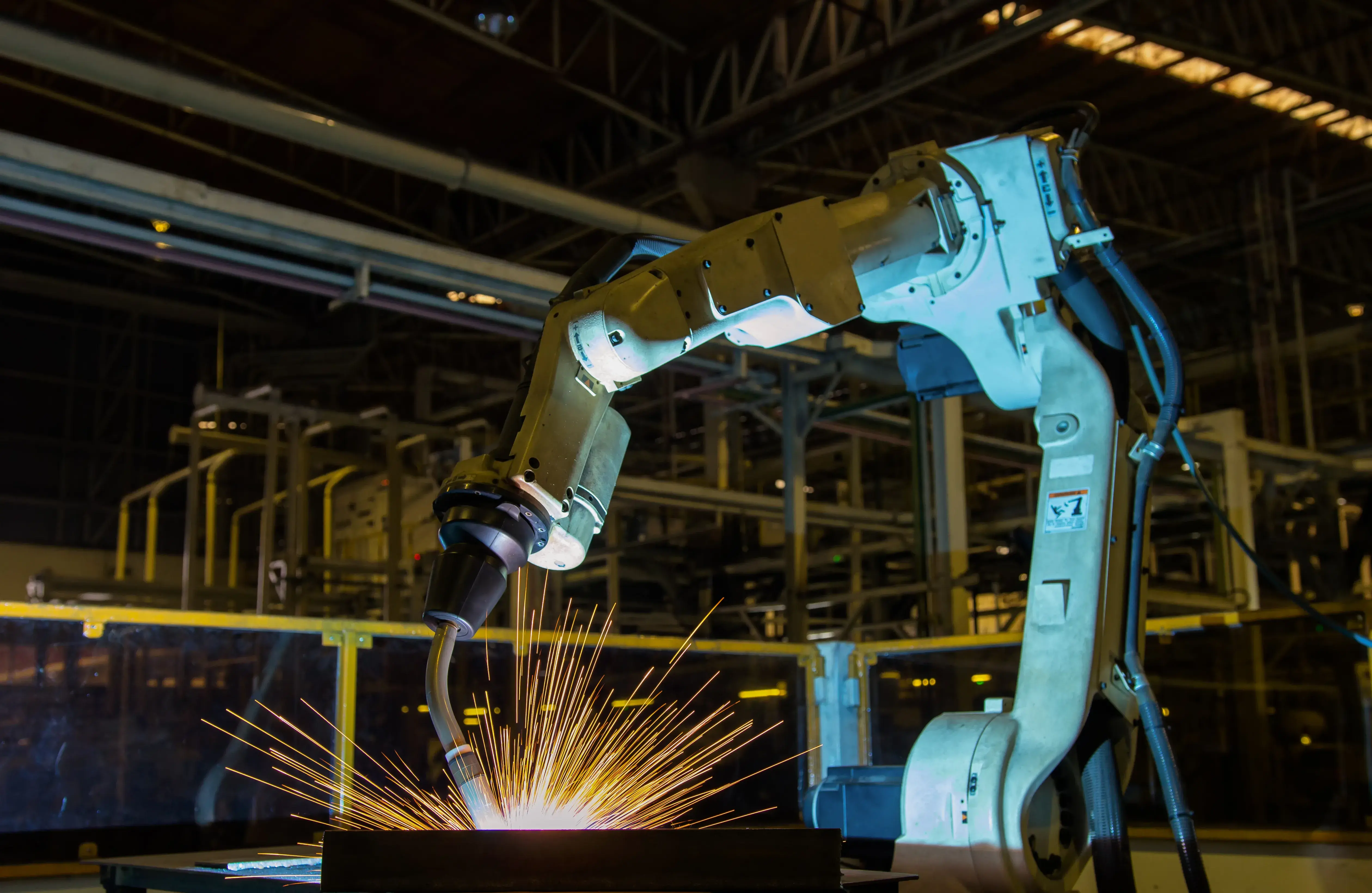Will latest robots replace humans in Welding Industry?
6th July 2022
 Shalini Ghose
Shalini Ghose
Introduction
Robotics is that branch of Artificial Intelligence that has
impacted the world. It has affected the ways of life significantly. Robots can be found everywhere and
are human’s best companions. It reduces the physical efforts and is reliable for programmable tasks.
The first known robot was created in the 1950s by George C. Devol
named “Unimate”. The robot was a reprogrammable manipulator. It was a hydraulic arm structured robot
programmed to perform repetitive tasks and was controlled by vacuum tubes working as digital switches.
How has robotics changed the workforce?
Robotics has drafted a massive change in how the world performs.
It has increased the efficiency and productivity of the workforce.
A recent study by Oxford Economics showed that robotics has the
potential to replace 10% of the human jobs, out of which the majority belong to low-paying jobs that
require significant physical exertion for humans.
Another report by them stated robotics have the power to replace
about 20 million manufacturing jobs in the next decade. The stock market changes suggest that the
global stock of robots may reach 20 million by 2030, almost double today’s stock value.
These data are enough to understand how robots have impacted the
world. At the industry level, many jobs requiring hard work have been replaced by automated machines.
Like in any other industry, robotics has significantly impacted
the welding industry. Robots have started handling many automated tasks performed in the welding
sector. Advanced robotic techniques are used in the welding industry to get the maximum output of the
latest welding technologies.
Advanced robotics is a form of robotics where efficient hardware
is programmed to perform sensor-based actions. These robots are reprogrammable and are designed to
accomplish repetitive tasks that require very less to zero analytical capability.
Advanced robotics in the welding industry gives better safety and
performs those tasks efficiently out of human reach. Additionally, they save time and are
cost-effective in many ways.
Robotics Welding Equipment
A welding robot can be either an arm or a portal, depending on the
application. Usually, the welding arm comprises 3-dimensional or 6-dimensional movement. A
high-heating torch is connected at the robotic arm's end, producing heat to melt the metal and weld
it.
As the temperature in the process goes 1000 degrees, it is the
safest way to weld the metals and prevent accidents. A teach pendant is used by a welder to control
the process which can be reprogrammed for different movements and parameters.
Robotic Welding Techniques
The most important aspect of advanced robotics in the welding
industry is accurate programming. Different welding techniques can be performed by using these
automated machines for better productivity and safety.
Here is the list of welding types that uses AI -
-
Resistance Spot Welding - Used to join thinner surfaces like metal sheets.
-
Laser welding - Minimizes the distortion due to a smaller heat affected zone.
-
Gas Metal Arc Welding (GMAW) - A shielding gas protects the metal from environmental reactions. It
uses an arc between metal and wire electrodes.
-
Gas Tungsten Arc Welding (GTAW) - Similar to GMAW but uses tungsten instead of an arc.
-
Thin Gauge Arc Welding - Ideal for welding thin surfaces.
-
Plasma welding - Can be used to make both keyhole and non-keyhole types of welds.
-
Laser Hybrid Welding - Combines the principles of laser and arc welding.
Will robots replace humans in the welding industry?
Robots have an important place in the welding industry. Many of
the latest welding
technologies are not possible without robots. Furthermore, robots increase
productivity and consume less time than human beings in welding tasks.
So, will robots replace humans? No. Robots can not replace humans.
A robot always needs a human to perform its tasks efficiently. Advanced welding robots can perform
programmed tasks, but welding is not monotonous work. It requires a lot of adjustments according to
the welding requirement.
Robots are very efficient in their tasks but lack intelligence.
Robots can not analyze a situation and mold the work according to that. Industry always needs human
logic for that.
So, a robot always needs its human to work efficiently and
accurately.
Even when there is data available that says that robots
will replace a large number of humans, a study by Orford Economics in collaboration with Cisco stated
that there would be a large number of jobs emerging in different industries, including healthcare,
manufacturing, and computing.
The use of robots for low-level jobs will need humans to
control them at the ground level and program and update them at a high level. It will give a sudden
shift to the workforce, and while people may have to shift their jobs, there will be plenty of
employment due to the use of robots.
So, even when it looks like robots may replace humans in
the workforce on the outer surface, they are creating better job opportunities at higher levels.
So, the bottom line is that a robot can never work without
its human. Without human intelligence, a robot would not be able to perform a single task accurately.

